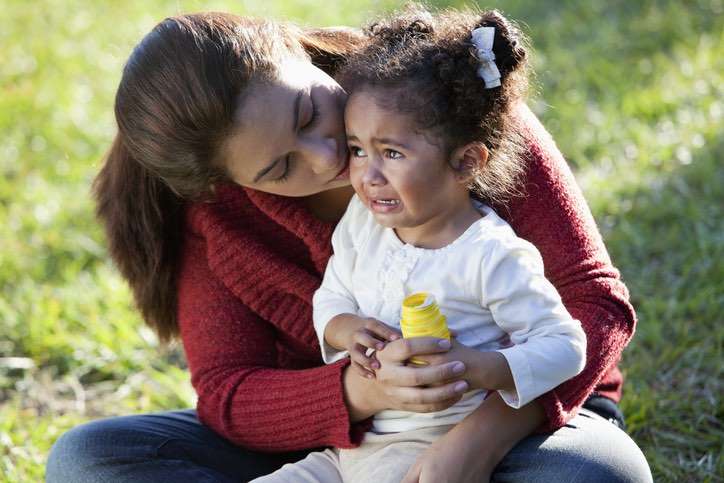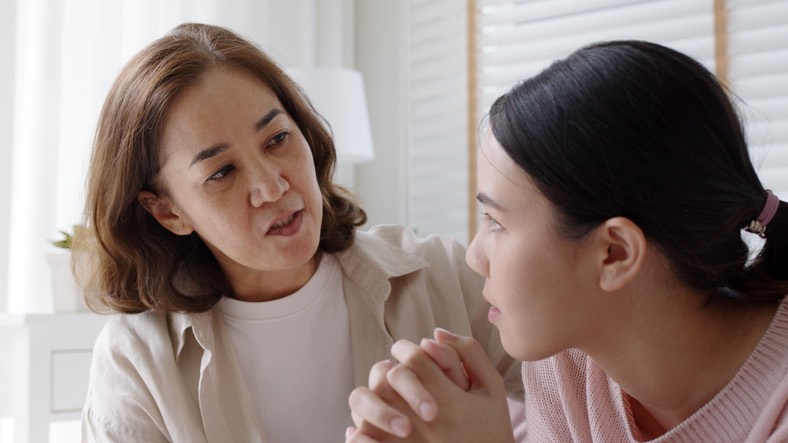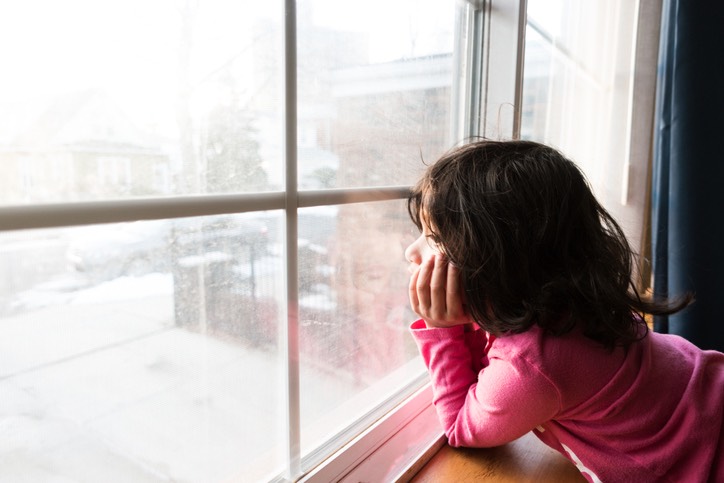How I’m Teaching My Kids That It’s Okay to Cry Even Though I Struggle With It

If you grew up in a less emotionally open culture and/or had more traditional parents, it can be difficult to teach your children how to manage their big feelings since you weren’t raised in that type of environment.
Here’s a story of a mother’s journey in navigating her past struggles with crying and how she’s learning to embrace those tears with her children.
Related: Helping Children with Big Emotions
My parents discouraged me from crying
When I was growing up, crying was seen as a negative behavior that needed to be done in private. Whenever I hurt myself by bumping my head, falling, or getting upset with a sibling, my parents would immediately say the words, “無事”. In Chinese, this means “Not an issue”. Then they would follow up by telling me to stop crying.
There was never any explanation why I shouldn’t shed tears. They didn’t tell me to “toughen up” or that “big girls weren’t supposed to cry”. However, the look on their faces explained it all. My crying made them feel uncomfortable and they wanted to nip it in the bud before it got out of hand. This was especially true whenever we were in public.
My mom’s lack of tears

My mom always had a dry eye. I could never read what she was feeling behind her calm composure and indifferent facial expression. Although she doesn’t know how to play poker, I think she would win many championships.
Her father passed away when I was in grade school and my mom mourned her loss very privately. For many nights after his death, I would hear her crying in the bathroom while I was in bed. Then she’d blow her nose, flush the toilet and go to sleep.
The next day, her face would be puffy and her eyes would be tired. I could tell she wasn’t her normal self but she never talked about how she was feeling in front of us. She’d carry on the day, fulfilling her duties as a mother and wife without needing a moment to stop.
Cultural expectations
Culturally, Chinese people are perceived to be stoic, maintaining their composure during adversity. Crying is associated with mental weakness and therefore should be done away from others to avoid embarrassment and making others feel uncomfortable. Being able to hide your emotions and face life challenges without flinching were signs of strength and courage.
My parents had limited emotional awareness and lacked the ability to talk about their feelings. Although they shared a lot of stories during family dinners, there was rarely any discussion about how something made them feel. I desperately wanted to be emotionally validated but they never did, not because they didn’t want to but because they didn’t know how and didn't understand the importance of it.
I know it’s healthy to cry, but I still struggle with it
So for most of my life, I struggled to cry. Whenever I felt that lump in my throat, I would try my best to swallow it down. If I couldn’t hold it together, I would go to the bathroom or some private space so I could cry alone. I didn’t want others to see me crying.
However, when I started to learn more about how to manage my emotions, I gradually embraced crying as a normal reaction to big emotions.
Crying is natural and can be cathartic. Crying is a sign of courage, vulnerability, strength, and authenticity. Being human means having the ability to express your emotions. Crying is a necessary physiological function with many benefits that can improve your health.
Crying can increase your body’s production of endorphins which are also known as “feel-good hormones”. Shedding emotional tears can help reduce the level of stress hormones and toxins in your body. In addition, after crying, your heart rate and breathing rate decrease; your body enters a more calm and relaxed state.
It’s been a journey for me to decondition myself from the way I was raised and the beliefs around crying. When I became a mom, I started thinking about what I wanted to preserve as a parent and what I wanted to shed for the next generation.
Tips for teaching kids to express their emotions

Crying was something I wanted to change and break the generational cycle for. Here’s how I’m encouraging my kids and creating a safe environment for them to shed tears.
Don’t punish (or reward)
Although my parents never disciplined me for crying, their judgemental response made me believe I was doing something wrong.
As a parent, I try to remain calm, respectful, and emotionally available when my kids cry. I don’t want them to associate crying with shame but I also don’t want them to believe they can use their tears to get whatever they want.
Verbally validate their feelings
When I cried, my parents would minimize my feelings and try to get me to stop. They would say things like “You’re fine” and “It’s not a big deal”.
However, when my children cry, I validate their emotions and acknowledge the frustration or pain they are experiencing.
Some examples of phrases that I use to help validate their feelings include:
- “I’m here to listen.”
- “Tell me more about it.”
- “It doesn’t feel good.”
- “It’s okay you’re feeling this way.”
- “I know this is really hard right now for you.”
- “It’s okay to cry.”
- “I see you are feeling sad/upset/angry/frustrated”
- “I can help you work it out.”
- “I’m giving you space but I’ll stay close so you can find me when you need me.”
There are also times when I sense my presence is comforting enough so I don’t say anything and stay quiet beside them while they cry.
Don’t interfere

There are times when I want to distract my child when they’re upset rather than help them through their tough moment. For instance, giving them a toy, turning on the TV, or hugging them right away. However, this is quite disrespectful as it shuts down their chance to experience the tears and fully express themselves.
Instead of trying to get them to focus on other things, I give them the time, emotional room, and mental space to feel safe crying. I see crying as an opportunity for my kids to learn how to deal with their emotions and self-regulate.
Although I don’t hug them immediately, I do offer it after they have calmed down.
Breaking the cycle and learning new ways of parenting
As parents, we want to do what’s right for our kids so they grow up into happy and healthy adults. It can be tough to know what right means when the way we were raised isn’t how we want to raise our kids. Although we cannot change our past, we can change the future.
Identifying the generational issues that impacted us and making the decision to do better are the steps toward healing ourselves and creating a world that our children can thrive in.
–
For more ways to help your kids express their emotions, use our Ultimate List of Feelings to Help Kids Express Themselves.

